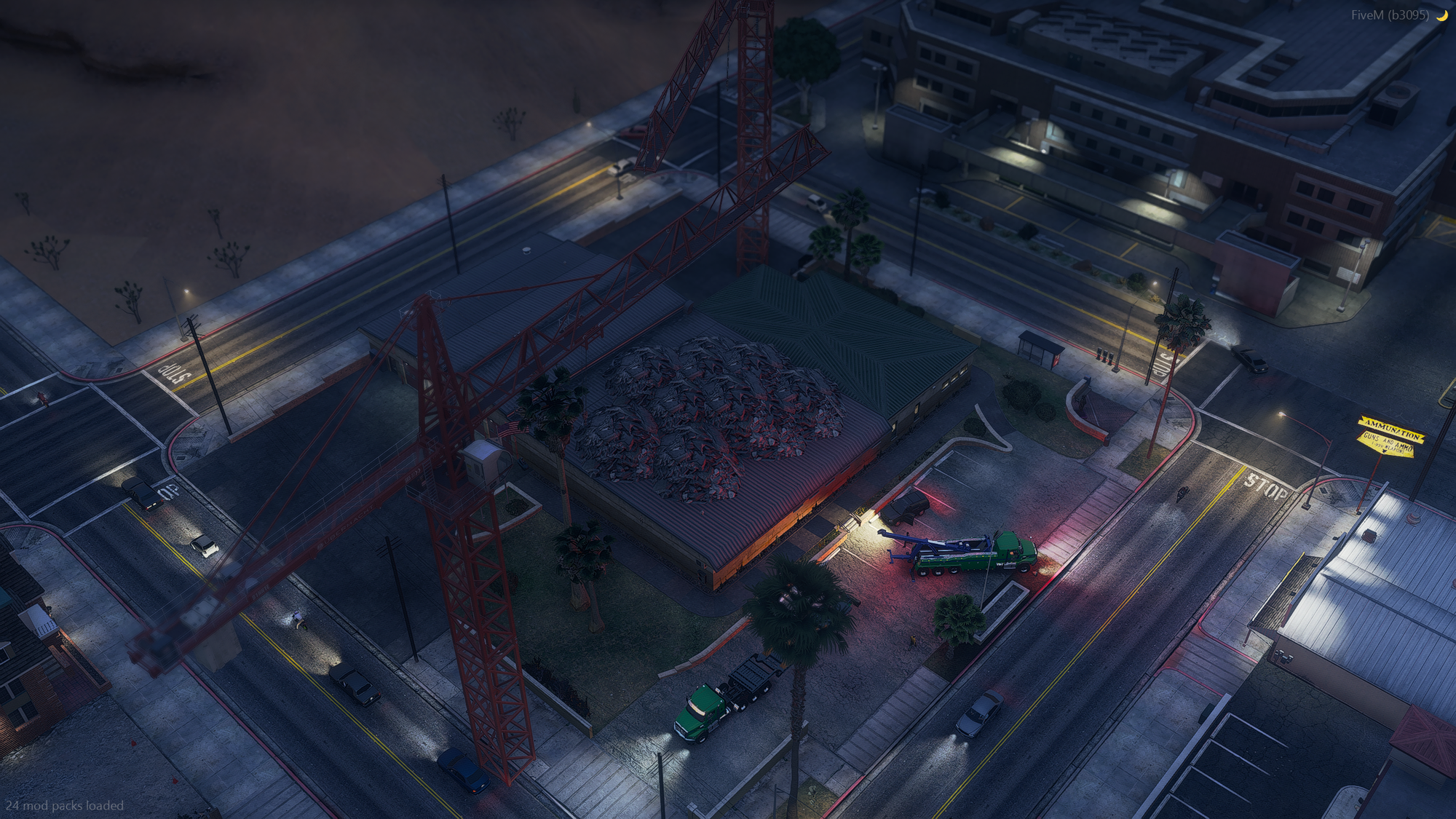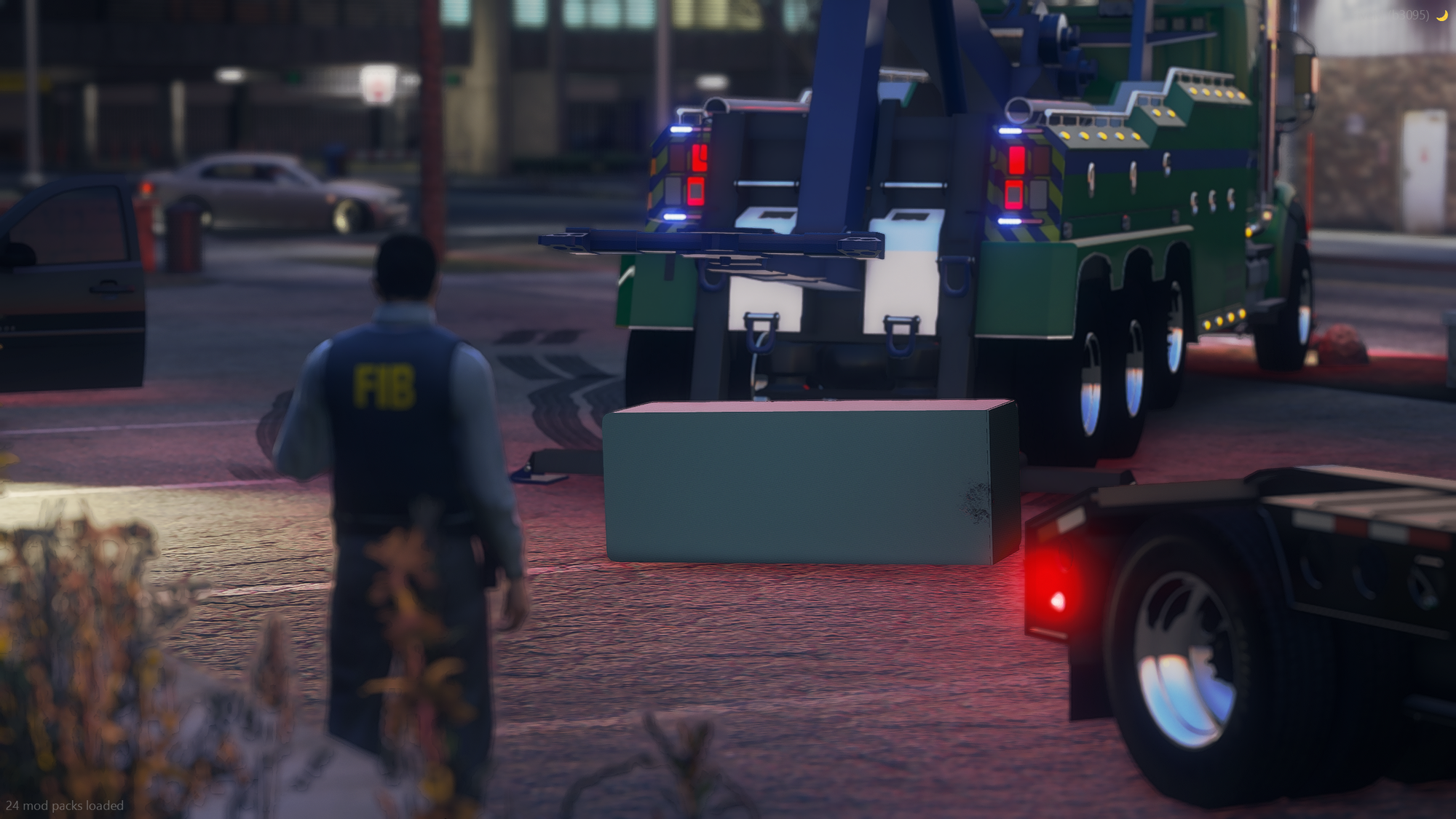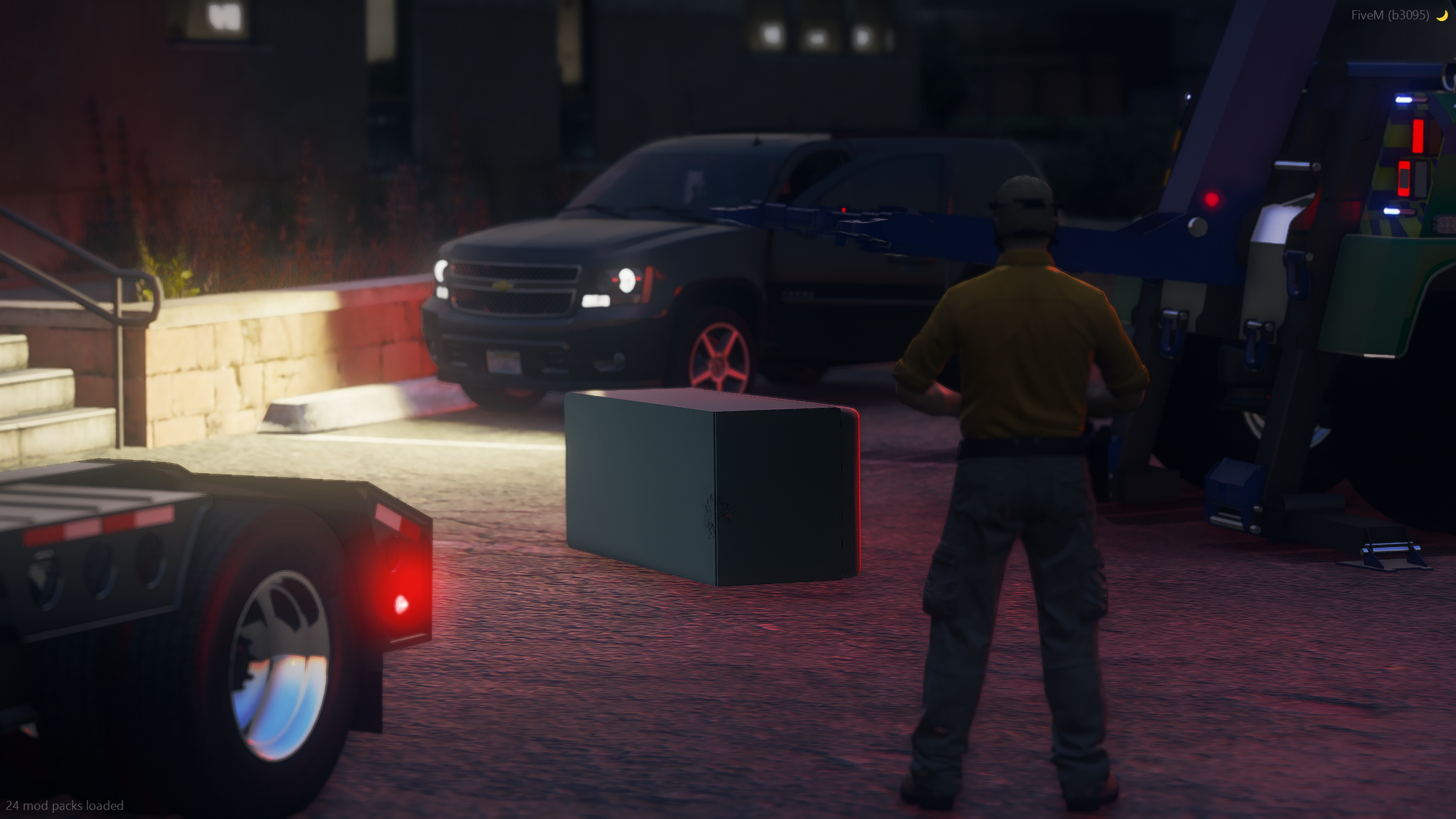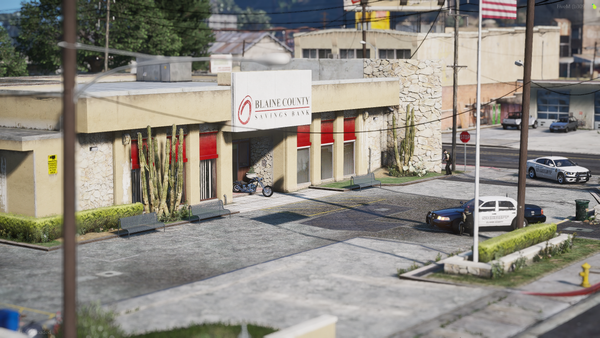WEAZEL NEWS EXCLUSIVE: Federal Investigation Deepens as "Burger Fridge" Requires High Skill Extraction from Fort Carson Firehouse

By the Weazel Investigates Team
Fort Carson, San Andreas – What started as a simple case of questionable fast-food budgeting has spiraled into a full-scale federal investigation requiring industrial equipment, hazmat protocols, and a massive gaping hole in the Fort Carson firehouse roof. The experts called in Jax's Recovery Services to help.
In a dramatic escalation of what locals are now calling "Bender's Blunder," federal agents from the FIB's Environmental Crimes Unit descended on the Fort Carson Fire Department this week with a convoy that looked more suited for a Humane Labs raid than a small-town firehouse inspection. The mission: extract the infamous refrigerator that housed 300 decomposing BurgerShot meals for over two weeks.

When Fast Food Becomes Hazardous Waste
The situation reached critical mass Tuesday morning when firefighters reported that the contaminated Pißwasser Mini-Fridge, originally purchased through a questionable city procurement deal three years ago had become "structurally compromised" by what one source described as "an ecosystem of grease, mold, and things that probably violated several Geneva Convention protocols."
A firefighter speaking on condition of anonymity because his union rep was still recovering from food poisoning, told Weazel Investigates:
"We tried to open it Monday to clean it out. The smell knocked out two guys immediately. One of them was wearing a gas mask. That's when we knew we were in deep shit."
The fridge, according to multiple sources, had essentially become a biohazard time bomb. The combination of 300 reheated BurgerShot meals, industrial-grade refrigeration failure, and two weeks of bacterial fermentation had created what EPA officials are calling "an unprecedented organic contamination event."
Dr. Patricia Vance, a biochemist from the University of San Andreas who was called in as a consultant, explained the severity:
"When you have that much processed burgershot meat and synthetic cheese products breaking down in an enclosed environment, you're looking at methane production, potential botulism risks, and bacterial colonies"
What should have been a simple appliance removal quickly escalated when it became clear that the fridge couldn't be moved through conventional means. The contamination had apparently caused the unit to "seal itself" according to FIB Environmental Specialist Agent Jack, creating what he described as "a vacuum effect combined with structural adhesion to the surrounding walls and flooring."
That's when the city called in Jax's Recovery Services, the same company that handles everything from overturned Phantom trucks on the Senora Freeway to yacht recoveries in the Alamo Sea.
The extraction required two industrial cranes. But the real surprise came when structural engineers determined that the only safe way to remove the contaminated appliance was through the roof.

Crews spent three hours Tuesday carefully cutting a six-foot square hole in the firehouse roof. Neighbors gathered nearby to watch. The actual extraction took another two hours, with FIB agents in full hazmat gear supervising every movement. The fridge, wrapped in industrial plastic sheeting and sealed in what appeared to be a custom containment unit, was loaded onto a specialized transport truck and driven away under federal escort.


Dr. Turner, an environmental scientist from UC San Andreas, explained the potential long-term effects: "When you have that level of bacterial contamination in an enclosed space for an extended period, you're looking at potential groundwater contamination, soil degradation, and air quality issues. The methane production alone could have created explosion risks if it had continued much longer."

The contamination has already affected local wildlife, with several reports of unusually aggressive seagulls and what one resident described as "rats the size of small dogs" in the immediate area. Animal Control has set up a perimeter and is monitoring the situation, though they've declined to comment on whether the incidents are directly related to the burger contamination.
Current estimates put the total cost of the incident including the initial burger purchase, federal investigation, specialized extraction, environmental cleanup, and building repairs at over $275,000. That's money that could have funded new safety equipment, training programs, or actual emergency preparedness initiatives.
Meanwhile, The extracted refrigerator remains in federal custody at an undisclosed location, where it will undergo extensive analysis as part of the ongoing investigation. EPA officials estimate that preliminary results will be available within two weeks, though they warn that a full environmental impact assessment could take months.
In the meantime, the Fort Carson Fire Department is operating with temporary kitchen facilities and a significantly smaller budget for "emergency provisions." Whether this represents a return to fiscal responsibility or simply damage control remains to be seen.
Weazel Investigates continues to follow this developing story. Updates available on our website and Bleeter @WeazelInvestigates





